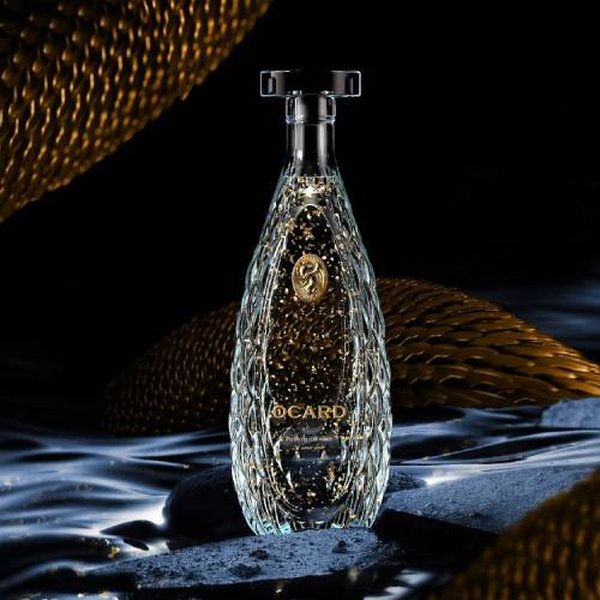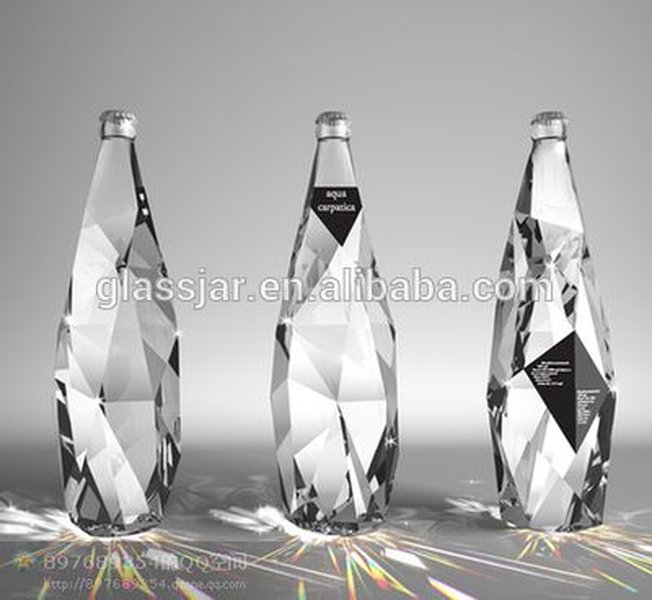
Mastering the Art of Bottle Rendering and Design
Exploring Techniques and Inspiration for Stunning Bottle Visualizations and Crafts
Key Insights into Bottle Rendering and Design
- 3D Rendering for Bottles: Bottle rendering is a powerful technique using 3D visualization software to create photorealistic CGI bottles, showcasing packaging, materials, and textures without physical photography.
- Diverse Design Applications: Bottle design extends beyond commercial packaging to creative crafts, home decor, and upcycling projects, offering limitless possibilities for personal expression and artistic endeavors.
- Combining Aesthetics and Functionality: Successful bottle design and rendering balance visual appeal with practical considerations like shape, material, and intended use, whether for a luxury perfume or a decorative art piece.
Bottle rendering and design encompass a wide spectrum of creative and technical processes, ranging from generating photorealistic digital images for marketing to transforming physical bottles into unique art and decor. At its core, bottle rendering is the creation of a computer-generated image (CGI) of a bottle using 3D visualization technology. This process allows designers and artists to accurately represent the packaging, materials, colors, textures, and overall appearance of a bottle in a highly detailed and realistic manner, often serving as an alternative to traditional product photography for e-commerce platforms and marketing materials.
Understanding Bottle Rendering
The Process and Purpose of Creating Digital Bottle Visuals
Bottle rendering involves utilizing specialized software to build a three-dimensional model of a bottle. This digital model can then be manipulated to apply various materials, textures, and lighting setups. The goal is to produce a visual representation that is as close to a real photograph as possible, highlighting the bottle's design features and aesthetic appeal. This is particularly valuable for brands and designers who need high-quality images for product listings, advertising campaigns, or presentations before physical prototypes are even created.
Why Brands Utilize 3D Bottle Rendering
Brands increasingly turn to 3D bottle rendering for several compelling reasons. It offers flexibility in showcasing different angles, lighting conditions, and environmental contexts without the cost and logistical challenges of traditional photography. It also allows for easy modifications and iterations of the design, enabling brands to experiment with different looks and feel before committing to production. High-resolution studio renders generated through this process are ideal for use on e-commerce platforms, providing clear and detailed visuals for online shoppers.
The process typically involves modeling the bottle's shape, applying realistic materials (like glass, plastic, or metal) with appropriate properties (such as transparency, reflection, and refraction), and setting up a virtual lighting environment. Advanced techniques can include simulating the liquid inside the bottle, ensuring accurate visual representation of fill levels and liquid characteristics.
Technical Considerations in Rendering
Achieving a convincing bottle render requires attention to several technical details. When rendering glass bottles with liquid, for instance, it's crucial to ensure there's a slight air gap between the back of the glass and the liquid to avoid rendering artifacts. Lighting plays a critical role in highlighting the bottle's form, material properties, and any embossed or debossed details. Techniques like using backlighting can help emphasize the bottle's contours and the liquid within.
Inspiring Bottle Design Ideas
Exploring Creativity in Bottle Aesthetics and Functionality
Bottle design is not limited to the digital realm of rendering; it also encompasses the physical creation and decoration of bottles for various purposes. From commercial packaging that aims to stand out on a shelf to artistic crafts that transform discarded bottles into decorative pieces, the possibilities are vast. Designers consider shape, color, material, labeling, and overall form to create bottles that are both visually appealing and functional.
Innovative Commercial Bottle Designs
In the commercial world, bottle design is a key element of brand identity and marketing. Brands are constantly seeking innovative designs to capture consumer attention. This can involve unique shapes, unconventional materials, and creative labeling. Examples include detergent brands using minimalist glass bottles to project a sophisticated image, or beverage companies designing bottles with ergonomic shapes that also convey a message about the product, such as a dumbbell shape for a low-calorie drink.
The design of a bottle can tell a story and evoke specific feelings or associations. For instance, a bottle design might be inspired by historical periods, natural forms, or abstract concepts to create a strong narrative for the brand.

Examples of unique water bottle shapes.
Creative Bottle Craft and Decoration
Beyond commercial use, bottles are also popular subjects for creative crafts and decoration. Upcycling and transforming used bottles into new objects is a sustainable and artistic endeavor. Ideas range from simple painted or glitter-covered bottles to intricate designs involving decoupage, etching, or the addition of various materials like twine, seashells, or pebbles.
These crafts can result in unique home decor items such as vases, candle holders, light fixtures, or even components for outdoor installations like fences or garden art. The process often involves cleaning the bottles, preparing the surface, and applying decorative elements through painting, gluing, or other techniques. The beauty of bottle crafts lies in the ability to personalize each piece and give discarded items a new life.

An example of a decorated bottle.
Combining Rendering and Design for Impact
Leveraging Digital Tools and Creative Vision
The worlds of bottle rendering and design are often intertwined. Designers may use 3D rendering to visualize and refine their bottle designs before production or crafting begins. This allows for a realistic preview of how the final product will look and helps identify any potential issues with the design or materials. For crafters, while not always involving complex 3D rendering, the principles of visualizing the final product and planning the steps are similar.
For those interested in both aspects, exploring 3D rendering software and graphic design tools can enhance their abilities. Platforms offering customizable templates for water bottles or showcasing vast collections of bottle designs can serve as valuable resources for inspiration and practical application.
Tools and Resources for Bottle Design and Rendering
Various software and online platforms cater to bottle design and rendering. 3D modeling and rendering software like Blender, Cinema 4D, Redshift, and KeyShot are used for creating high-quality renders. Graphic design platforms like Canva provide templates for creating labels and personalized designs for bottles. Online communities and platforms like Behance, 99designs, and Pinterest offer extensive galleries of bottle design and rendering projects, serving as excellent sources of inspiration.
Case Studies in Effective Bottle Design and Rendering
Successful examples of bottle design and rendering can be seen across various industries. In the spirits industry, intricate bottle shapes and detailed labels often require sophisticated rendering to accurately capture their luxury and craftsmanship. In the beverage sector, vibrant and playful designs on water bottles or unique shapes for craft beers demonstrate the power of design in attracting specific consumer demographics. The use of 3D rendering allows these brands to present their products in a polished and appealing manner in their marketing materials.
Frequently Asked Questions
What is the primary purpose of bottle rendering for businesses?
The primary purpose of bottle rendering for businesses is to create high-quality, photorealistic digital images of their bottle products for marketing, e-commerce listings, and presentations. This allows for detailed visualizations without the need for physical product photography, offering flexibility and cost-effectiveness.
Can I use everyday bottles for crafting and decoration?
Absolutely! Everyday bottles, such as wine bottles, glass jars, and plastic bottles, are commonly used for crafting and decoration. They can be transformed into various decorative items through techniques like painting, decoupaging, etching, and adding embellishments.
What software is used for 3D bottle rendering?
Several software programs are used for 3D bottle rendering, including Blender, Cinema 4D, Redshift, and KeyShot. These programs allow for 3D modeling, material application, lighting setup, and rendering to create realistic bottle visuals.
Where can I find inspiration for bottle design ideas?
Inspiration for bottle design can be found in various places, including online platforms like Pinterest, Behance, and 99designs, which showcase numerous bottle design projects and templates. Exploring different industries, art forms, and everyday objects can also spark creative ideas.
Are there specific considerations when rendering glass bottles with liquid?
Yes, when rendering glass bottles with liquid, it is important to consider the interaction of light with the glass and liquid. Technical details such as adding a slight air gap between the glass and liquid can help prevent rendering issues and ensure a more realistic result. Proper material settings for transparency, refraction, and reflection are also crucial.
References
Last updated April 24, 2025